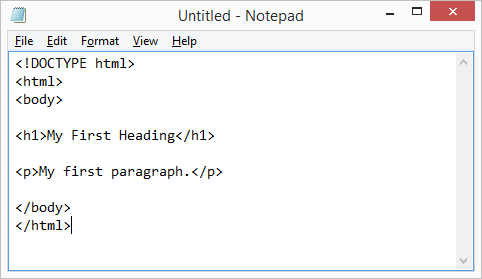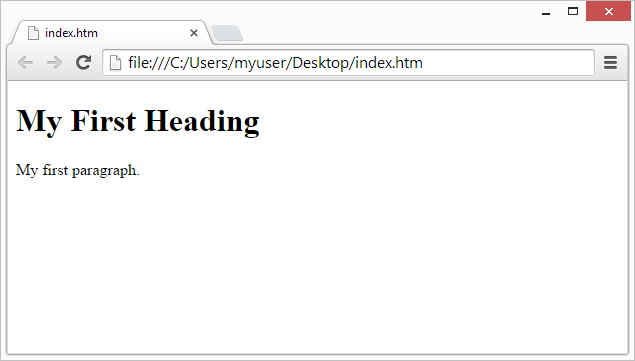HTML Example Explained
The
<html> element defines the
whole document.
It has a
start tag <html> and an
end tag </html>.
The element
content is another HTML element (the <body> element).
<html>
<body>
<h1>My First Heading</h1>
<p>My first paragraph.</p>
</body>
</html>
The
<body> element defines the
document body.
It has a
start tag <body> and an
end tag </body>.
The element
content is two other HTML elements (<h1> and <p>).
<body>
<h1>My First Heading</h1>
<p>My first paragraph.</p>
</body>
The
<h1> element defines a
heading.
It has a
start tag <h1> and an
end tag </h1>.
The element
content is: My First Heading.
<h1>My First Heading</h1>
The
<p> element defines a
paragraph.
It has a
start tag <p> and an
end tag </p>.
The element
content is: My first paragraph.
<p>My first paragraph.</p>
Don't Forget the End Tag
Some HTML elements will display correctly, even if you forget the end tag:
Example
<html>
<body>
<p>This is a paragraph
<p>This is a paragraph
</body>
</html>
The example above works in all browsers, because the closing tag is considered optional.
Never rely on this. It might produce unexpected results and/or errors if you forget the end tag.
Empty HTML Elements
HTML elements with no content are called empty elements.
<br> is an empty element without a closing tag (the <br> tag defines a line break).
Empty elements can be "closed" in the opening tag like this: <br />.
HTML5 does not require empty elements to be closed. But if you want stricter
validation, or you need to make your document readable by XML parsers, you
should close all HTML elements.
HTML Tip: Use Lowercase Tags
HTML tags are not case sensitive: <P> means the same as <p>.
The HTML5 standard does not require lowercase tags, but we
recommends lowercase in HTML4, and
demands lowercase for stricter document types like XHTML.



